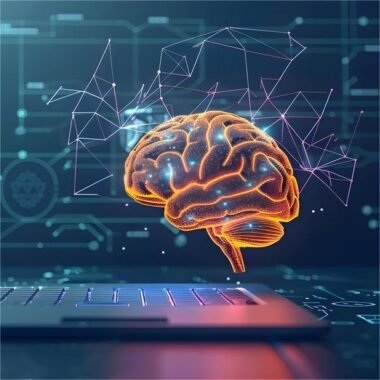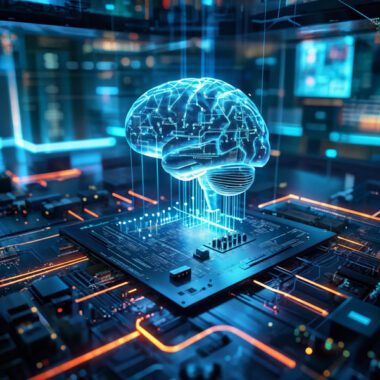Summary: This blog delves into 20 Deep Learning applications that are revolutionising various industries in 2024. From healthcare to finance, retail to autonomous vehicles, Deep Learning is driving efficiency, personalization, and innovation across sectors. Discover how this powerful AI technology is shaping the future of business and society.
Introduction
Deep Learning, a powerful subset of Artificial Intelligence (AI), has become integral to numerous industries, driving innovation and efficiency. As we progress through 2024, Deep Learning applications are expanding, influencing how businesses operate and interact with technology. This blog explores 20 significant applications of Deep Learning across various sectors, highlighting their transformative impact.
Top 20 Applications of Deep Learning
Deep Learning is transforming industries by enabling advanced applications that enhance efficiency and innovation. This section explores the top 20 applications of Deep Learning in 2024, showcasing its impact across various sectors, including healthcare, finance, retail, and more.
1. Healthcare
Deep Learning is revolutionising healthcare by enhancing diagnostic accuracy and treatment personalization.
Medical Image Analysis
Deep Learning algorithms analyse medical images such as X-rays, MRIs, and CT scans to detect anomalies like tumours or fractures. These models significantly improve early diagnosis rates and reduce human error, leading to better patient outcomes.
Predictive Analytics
By analysing patient data, Deep Learning can predict disease outbreaks and patient deterioration. This proactive approach allows healthcare providers to intervene early, potentially saving lives and optimising resource allocation.
Drug Discovery
AI models accelerate the drug discovery process by predicting molecular behaviour and identifying potential drug candidates more efficiently. This reduces the time and cost associated with bringing new drugs to market.
2. Finance
The finance sector leverages Deep Learning for various applications that enhance decision-making and risk management.
Fraud Detection
Deep Learning models analyse transaction patterns in real-time to identify fraudulent activities. By recognizing anomalies in spending behaviour, these systems significantly reduce financial losses for banks and consumers alike.
Algorithmic Trading
AI-driven trading systems use Deep Learning to analyse market trends and execute trades at optimal times. This capability enhances profitability while minimising risks associated with market fluctuations.
Credit Scoring
Deep Learning improves the accuracy of credit scoring models by assessing a broader range of data points. This allows lenders to make more informed decisions regarding loan approvals and risk assessments.
3. Retail
In retail, Deep Learning enhances customer experience and operational efficiency. Here we have enlisted some of the key ways of how Deep Learning is transforming the retail sector.
Personalised Recommendations
E-commerce platforms utilise Deep Learning algorithms to analyse customer behaviour and preferences, providing personalised product recommendations that increase sales and improve customer satisfaction.
Inventory Management
Predictive analytics powered by Deep Learning helps retailers optimise inventory levels by forecasting demand more accurately. This minimises stockouts and overstock situations, improving overall efficiency.
Visual Search
Retailers implement visual search technologies that allow customers to upload images of products they want to find. Deep Learning algorithms match these images with similar items in the catalogue, enhancing the shopping experience.
4. Autonomous Vehicles
Deep Learning plays a crucial role in the development of autonomous vehicles. Autonomous vehicles (AVs) are equipped with advanced technologies that enable them to operate without human intervention. These vehicles utilise a combination of sensors, cameras, radar, and artificial intelligence (AI) to navigate and respond to their environments safely.
Object Recognition
AI systems use Deep Learning to identify pedestrians, traffic signs, and other vehicles on the road in real-time. This capability is essential for ensuring safety in autonomous driving scenarios.
Path Planning
Algorithms calculate optimal routes while considering various factors such as traffic conditions and road hazards. This leads to more efficient navigation and reduced travel times.
Driver Assistance Systems
Advanced driver-assistance systems (ADAS) leverage Deep Learning for features like lane detection, adaptive cruise control, and collision avoidance, enhancing driver safety and comfort.
5. Natural Language Processing (NLP)
NLP applications powered by Deep Learning have transformed how machines understand human language.
Chatbots and Virtual Assistants
These AI-driven tools utilise Deep Learning to provide customer support through natural language conversations. They can understand user intent and respond appropriately, improving user engagement.
Sentiment Analysis
Businesses use NLP to gauge customer sentiment from social media posts or reviews by analysing text data. This helps companies understand public perception of their products or services.
Language Translation
Deep Learning models have significantly improved the accuracy of machine translation services like Google Translate, enabling seamless communication across languages.
6. Cybersecurity
Deep Learning enhances cybersecurity measures by identifying threats more effectively.By analysing vast amounts of data, Deep Learning algorithms can identify patterns indicative of cyber threats, enabling organisations to proactively defend against attacks and safeguard sensitive information in real-time.
Anomaly Detection
AI systems monitor network traffic patterns to identify unusual activities that may indicate security breaches or cyberattacks. This proactive approach allows organisations to respond quickly to potential threats.
Malware Detection
Deep Learning algorithms classify files as malicious or benign based on their behaviour and characteristics. This capability helps organisations protect their systems from evolving cyber threats.
Phishing Detection
Email filtering systems utilise Deep Learning to detect phishing attempts by analysing email content and sender behaviour, safeguarding users from fraudulent communications.
7. Agriculture
In agriculture, Deep Learning contributes to increased efficiency and yield. Through advanced algorithms, farmers can optimise crop management, monitor plant health, predict yields, and enhance resource efficiency.
Crop Monitoring
Drones equipped with Deep Learning algorithms analyse crop health through aerial imagery, helping farmers make informed decisions about irrigation and fertilisation based on real-time data.
Precision Farming
AI systems optimise resource allocation (water, fertilisers) based on soil health Data Analysis. This targeted approach improves crop yields while minimising waste.
Pest Detection
Deep Learning models identify pest infestations early by analysing images from farms or greenhouses, allowing farmers to take timely action against potential threats to their crops.
8. Manufacturing
Deep Learning is transforming manufacturing processes through enhanced efficiency. Deep Learning is transforming the manufacturing sector by optimising processes, enhancing quality control, and enabling predictive maintenance.
Predictive Maintenance
AI models predict equipment failures by analysing sensor data, allowing manufacturers to perform maintenance before breakdowns occur. This reduces downtime and maintenance costs significantly.
Quality Control
Deep Learning algorithms inspect products on assembly lines using computer vision techniques to ensure quality standards are met consistently throughout production processes.
Supply Chain Optimisation
AI analyses supply chain data to forecast demand accurately and optimise inventory levels, leading to improved operational efficiency across manufacturing networks.
9. Energy Management
In the energy sector, Deep Learning aids in optimising operations for sustainability. With DL, manufacturers can analyse vast datasets in real-time, leading to improved efficiency, reduced costs, and higher product quality across production lines.
Smart Grids
AI systems analyse energy consumption patterns in real-time to improve grid management, reduce outages, and enhance energy distribution efficiency across networks.
Predictive Analytics for Maintenance
Energy companies use Deep Learning to predict equipment failures in power plants based on sensor Data Analysis, allowing for timely maintenance interventions that prevent costly downtimes.
Renewable Energy Forecasting
Deep Learning models predict energy generation from renewable sources like solar and wind based on weather Data Analysis, helping utilities manage supply effectively.
10. Telecommunications
Telecom companies utilise Deep Learning for network optimization purposes. This technology enables telecom companies to harness vast data for improved operational efficiency and innovative service delivery.
Network Traffic Management
AI analyses network traffic patterns to optimise bandwidth allocation during peak hours, ensuring a smooth user experience even under high demand conditions.
Churn Prediction
Deep Learning models assess customer behaviour to identify those likely to switch providers, enabling proactive retention strategies that improve customer loyalty rates.
Customer Support Automation
Telecom companies implement chatbots powered by Deep Learning to handle customer inquiries efficiently without requiring human intervention for routine questions or issues.
Read More: What is Transfer Learning in Deep Learning? [Examples & Application]
11. Entertainment
The entertainment industry leverages Deep Learning for enhanced user experiences across platforms. This technology harnesses vast data to deliver immersive experiences and drive audience engagement.
Content Recommendation Systems
Streaming services like Netflix use Deep Learning algorithms to recommend shows and movies based on user preferences and viewing history, increasing viewer engagement significantly.
Content Creation
AI tools assist in generating music, scripts, or artwork through generative adversarial networks (GANs), pushing creative boundaries while reducing production time for content creators.
Audience Analysis
Deep Learning analyses audience reactions during screenings or live events to refine marketing strategies tailored specifically toward target demographics based on collected feedback data points over time.
12. Smart Cities
Deep Learning contributes significantly towards developing smart cities through various applications aimed at improving urban living conditions overall:
Traffic Management Systems
AI analyses real-time traffic data from sensors/cameras installed throughout city infrastructure optimising traffic flow reducing congestion levels experienced during peak hours improving overall commute times for residents navigating urban environments daily.
Public Safety Monitoring
Surveillance systems utilise Deep Learning technologies enabling facial recognition capabilities detecting potential threats within public spaces enhancing safety measures implemented across municipalities ensuring citizens feel secure engaging within their communities freely.
Waste Management Optimization
Smart bins equipped with sensors use AI technology monitoring waste levels optimising collection routes minimising operational costs associated with traditional waste management practices leading towards greener sustainable solutions benefiting both local governments and residents alike.
13. Insurance
In the insurance industry, Deep Learning enhances risk assessment processes improving overall efficiency:
Claims Processing Automation
AI automates claims processing analysing documents/images submitted by policyholders speeding up resolution times while reducing manual errors associated with traditional methods employed previously.
Risk Assessment Models
Insurers leverage predictive analytics powered by Deep Learning evaluating historical claims data providing accurate assessments regarding potential risks involved when underwriting policies offered clients.
Fraud Detection in Claims
Deep Learning identifies suspicious claims patterns indicating possible fraudulent activities protecting companies against financial losses incurred due fraudulent behaviour exhibited by some individuals seeking exploit system loopholes available to them.
14. Education
Deep Learning reshapes education providing personalised experiences tailored individual student needs:
Adaptive Learning Platforms
AI-driven educational tools tailor content delivery based on performance/preferences ensuring students receive appropriate materials suited their current skill levels maximising engagement retention rates throughout lessons delivered.
Automated Grading Systems
Deep Learning algorithms assist educators grading assignments efficiently providing feedback to students helping them understand areas needing improvement without overwhelming teachers workload associated with manual grading practices utilised traditionally.
Student Performance Prediction
Institutions leverage AI predicting student outcomes based on historical performance data identifying at-risk students enabling targeted interventions necessary support needed to succeed academically effectively reducing dropout rates overall.
15. Real Estate
In real estate, Deep Learning aids market analysis improving decision-making processes involved buying/selling properties:
Property Valuation Models
AI analyses market trends/property features providing accurate valuations assisting buyers/sellers make informed decisions regarding pricing strategies employed transactions conducted.
Predictive Analytics for Market Trends
Real estate firms utilise AI forecasting fluctuations markets based economic indicators historical datasets allowing them stay ahead of competition ensuring profitability maintained long-term investments made.
Virtual Tours Enhancement
Deep Learning improves virtual tour experiences enhancing image processing techniques creating realistic simulations properties listed attracting potential buyers increasing likelihood of successful sales transactions completed.
16. Human Resources
Deep Learning transforms HR practices streamlining recruitment processes enhancing employee engagement initiatives:
Resume Screening Automation
AI analyses resumes using Natural Language Processing techniques identifying suitable candidates quickly. This helps in reducing time spent reviewing applications manually improving overall efficiency hiring teams involved during the selection process conducted.
Employee Engagement Analysis
Organisations use sentiment analysis tools powered by Deep Learning gauging satisfaction feedback surveys helping employers understand employee needs. Thus it helps in fostering positive workplace cultures encouraging retention efforts implemented accordingly.
Predictive Analytics for Retention Strategies
HR departments leverage predictive models identifying employees at risk leaving organisations. This helps them to implement proactive measures aimed at retaining top talent valuable assets contributing to company success long-term basis.
17. Supply Chain Management
Deep Learning optimises supply chain operations increasing efficiency throughout logistics processes involved:
Demand Forecasting Models
AI predicts demand fluctuations based on historical sales data/market trends enabling companies to optimise inventory levels reducing instances of stockouts/overstock situations encountered frequently impacting profitability negatively experienced businesses reliant upon accurate forecasting methods utilised effectively during planning stages executed regularly.
Logistics Optimization
Deep Learning analyses transportation routes real-time. This helps in improving delivery scheduling minimising costs associated with fuel consumption. At the same time, it also ensures timely arrivals of shipments.
18. Sports Analytics
In sports, Deep Learning enhances performance analysis providing insights into player/team dynamics:
Player Performance Tracking Systems
Coaches utilise AI-driven analytics tools tracking movements games assessing strengths weaknesses players involved informing strategies developed maximise chances winning matches played against opponents faced regularly seasonally throughout competitions participated actively engaged.
Injury Prediction Models
Teams employ predictive analytics powered by Deep Learning foresee potential injuries based workload data collected during training sessions/games played helping medical staff intervene proactively preventing serious complications arising from overexertion experienced athletes competing professionally at high levels consistently striving excel within respective fields pursued passionately.
19. Environmental Monitoring
Deep Learning aids environmental conservation efforts providing valuable insights into ecosystems monitored:
Remote Sensing and Satellite Imagery
Deep Learning models like Convolutional Neural Networks (CNNs) excel at processing and interpreting satellite and aerial imagery for environmental monitoring
Climate Modeling and Prediction
Deep Learning models, particularly Recurrent Neural Networks (RNNs) and Long Short-Term Memory (LSTMs), are enhancing climate models by capturing complex relationships in climate data.
20. Robotics
Robotics has seen significant advancements thanks technology advancements driven largely advancements made possible thanks implementation effective strategies.
Frequently Asked Questions
What are the Key Benefits of Using Deep Learning in Business?
Deep Learning offers numerous benefits for businesses, including enhanced accuracy in predictions, automation of repetitive tasks, improved customer experiences through personalization, and the ability to analyse large datasets quickly. These advantages lead to increased efficiency, better decision-making, and ultimately higher profitability across various industries.
Are There Any Challenges Associated with Implementing Deep Learning?
Yes, implementing Deep Learning can present challenges such as the need for significant computational resources, large labelled datasets for training models, and expertise in AI technologies. Additionally, organisations must address concerns related to data privacy and ethical considerations when deploying AI systems in real-world applications.
How Can Businesses Get Started with Deep Learning?
Businesses can start with Deep Learning by identifying specific use cases where AI can add value. They should invest in training their teams or hiring experts in AI technologies. Additionally, leveraging existing Deep Learning frameworks and cloud-based services can help streamline the implementation process and reduce initial costs.




